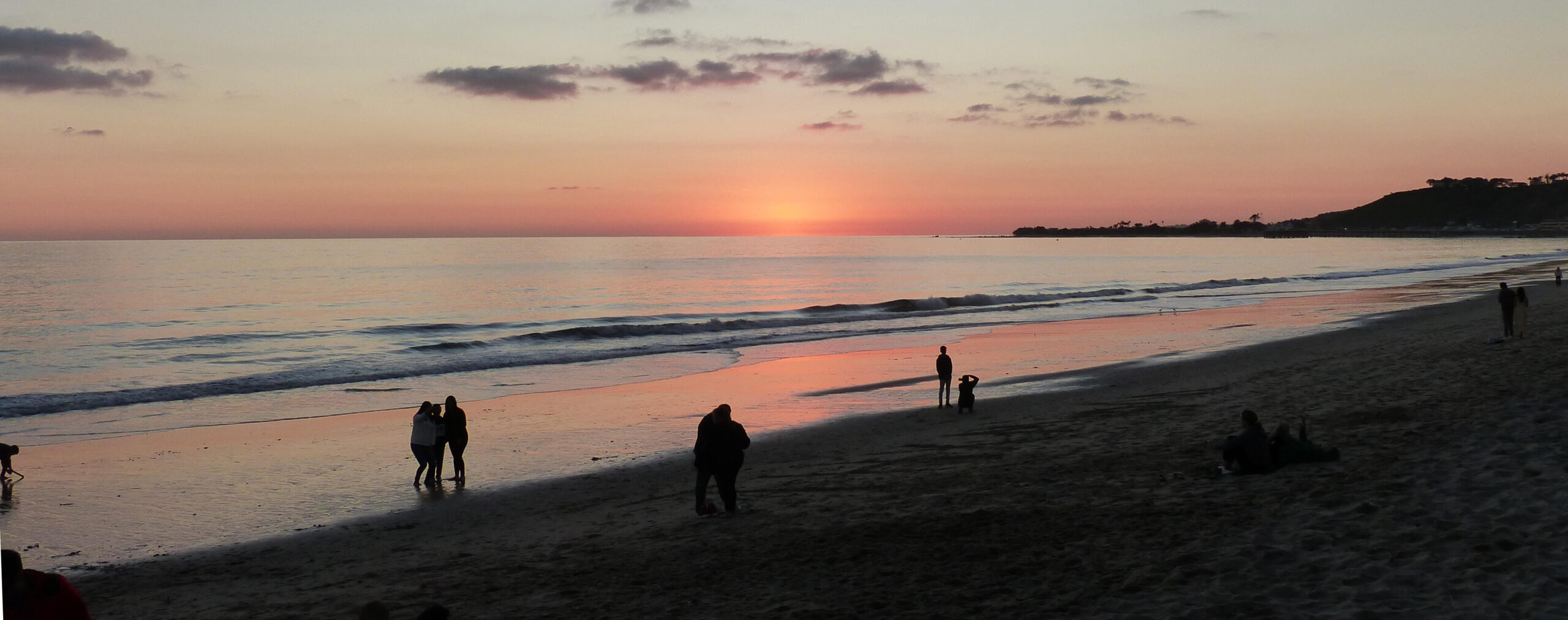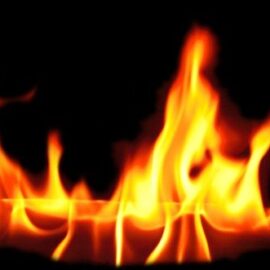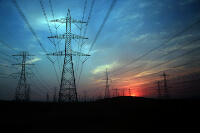
Welcome to Episode 2 of Warming World Explained. I’m Beth Stoeckly, your host. Today I’ll be talking about the greenhouse effect, but first let me remind you that this is not a political podcast. Think of it this way: it may rain tomorrow, or it may not. Even though we don’t know for sure right now, we can’t vote to change it. It would be like voting to repeal the law of gravity. What we should do is a political question, but facts are facts.
In the last episode, I talked about a pot simmering on a stove. The point was that to maintain a constant temperature slightly less than the boiling point, the heat input from the stove must just replace the heat being lost from the top and sides of the pot. If the rate of input is greater, the pot will heat up. If the rate of loss is greater, the pot will cool down.
This is generally true for everything: if the object absorbs more heat from its surroundings than it gives off, the object heats up; it’s temperature goes up. If the object absorbs less heat than it gives off, it cools down; the temperature goes down.
There is one important exception. I mention it here in case any of my scientist friends listen to this; I don’t want them to say I lied to you. And we will discuss it more in another episode when we talk about the melting of polar ice. The exception is that when a solid becomes a liquid, or a liquid becomes a gas, a lot of heat must be absorbed that goes into converting the solid to liquid, or the liquid to gas, and not to raising the temperature. Thus, ice at 32 degrees Fahrenheit must absorb a lot of heat to become water at 32 degrees Fahrenheit. Water at 212 degrees Fahrenheit absorbs a lot of heat to become steam at 212 degrees Fahrenheit. When the steam condenses or the water freezes, the energy is given off to the surroundings without lowering the temperature.
The same thing happens with substances other than water; but water is such a common substance and such an important substance that we have different names for it when it is solid, liquid, or gas. In fact, we have two names for water in the gas phase. Gaseous water is called steam. But when water molecules are mixed with oxygen and nitrogen and bits of other gases in the atmosphere, we usually call it water vapor.
Now, back to the greenhouse effect.
A greenhouse is a glass structure used to maintain an inside temperature higher than the outside temperature. The same phenomenon happens when a car is parked in the sun with the windows all closed. In these cases, what is impeding cooling is glass. In the case of the whole earth it is so-called “greenhouse gases” in the atmosphere. How does it work?
First, let’s talk a little about thermal radiation. Every object in the universe emits electromagnetic radiation according to its temperature. The higher the temperature, the more radiation is given off by every square inch of its surface, and the shorter the wavelengths. For example, the sun is very hot and emits an enormous amount of radiation. The sun radiates in all directions and only a small part of it is in the direction of earth. The sun’s radiation is mostly visible radiation, that is, electromagnetic radiation that our eyes can see. Everything on earth, on the other hand, is much cooler and emits mostly in the far infrared. It is the same type of wave as visible light, but with much longer wavelengths.
Different wavelengths of radiation interact differently with matter. Visible light goes through the atmosphere and through glass very well. That is why we make windows out of glass. Infrared does not pass through glass so well. In the parked car, for example, sunlight enters through the windows and the inside heats up. If the windows were open, the car could cool off by radiating in the infrared and through the movement of warm air out and cooler air in, until the inside temperature was the same as the outside. But with the windows closed, there is no motion of air, and a lot of the infrared radiation reflects back inside the car. And the car gets hotter.
For the earth as a whole, there is no equivalent to opening the windows. The atmosphere is a thin layer around the earth. On the scale of the planet, the atmosphere is as thick as the layer of varnish on a globe. Air currents can move heat around within the atmosphere. But outside that thin layer is the vacuum of space and the only way that the planet as a whole can receive of lose energy is through radiation. When there is a lot of greenhouse gas in the atmosphere, a lot of infrared radiation is reflected back down towards the earth and the earth keeps getting warmer. Adding more gases like carbon dioxide and methane to the atmosphere is like adding more layers of glass to a greenhouse; they reflect more of the infrared radiation that the planet must get rid of if it is to maintain a constant temperature.
If the concentration of greenhouse gases were to remain constant, but at a higher level than before, then the earth would heat up until it was radiating enough so that the amount of heat energy that made it out through the atmosphere was equal to the amount of heat energy coming in. And then a new steady temperature would be reached, higher than previously. But if more and more greenhouse gas is added, then the average temperature of the planet will continue increasing.
So far, I have said nothing controversial. Another fact that is almost completely without controversy is that the concentration of carbon dioxide in the atmosphere is now over 400 parts per million and rising. Prior to 1950 and during the previous 400,000 years, it was never over 300 parts per million.
You may wonder how we know this. Since 1958, carbon dioxide measurements have been made at Mauna Loa, Hawaii, at an elevation of 3,400m.(11,000 ft) This is far from sources of carbon dioxide in order to get measurements that represent the atmosphere as a whole. The record shows a small seasonal variations on a background of continuous rise. The seasonal variations occur because there is more land in the northern hemisphere than in the southern. When it is spring and summer in the northern hemisphere, more green plants are using carbon dioxide and the level dips a little. When it is fall and winter in the northern hamisphere, the concentration goes up a little. But those variations are small wiggles on a steadily rising trend.
Concentrations before 1958 are obtained from ice cores, mostly in Antarctica. The snow falls in Antarctica and gets compressed to ice, trapping bubbles of air in the ice. Seasonal variations cause annual layers that can be counted like tree rings to determine the age of the ice. And the layers can be separated, still frozen, and taken into the lab and analyzed.
Over the periods when global temperatures can be estimated using tree rings or other means, temperature correlates strongly with carbon dioxide concentration: more carbon dioxide, higher temperatures.
And once in the atmosphere, carbon dioxide stays for a long time. It may take hundreds or even thousands of years for natural processes to return the concentration to normal, even if we stopped adding it to the atmosphere today. The two major natural processes that remove carbon dioxide from the air are photosynthesis by green plants and absorption into the ocean.
You might think that higher concentrations of carbon dioxide would stimulate more plant growth which would consume more carbon dioxide, stabilizing the system. It probably does stimulate some growth, but lack of carbon dioxide is not the limiting factor for most plants. Limited space, sunlight, water, and soil nutrients aren’t helped by extra carbon dioxide, so the effect is not strong enough to remove the extra carbon dioxide from the atmosphere.
Water vapor is also a greenhouse gas, but it reaches a new equilibrium in weeks when conditions change. The concentration in the atmosphere varies from place to place and is largely driven by temperature. Here we meet the first of several viscious cycles that we will find as we discuss climate. As the surface of the earth warms, more water evaporates from the oceans, increasing the concentration of water vapor in the atmosphere, which in turn causes more warming.
It is worth pointing out that we need some greenhouse gases in the atmosphere. If the atmosphere contained only oxygen and nitrogen, the surface temperature would be to cold for life as we know it. So like everything else that supports and sustains life – water, sunlight, salt, food, — too much and too little both cause problems.
It is also worth clarifying the difference between water vapor and clouds. Water vapor is the gas phase of water mixed with the molecules of oxygen and nitrogen in the air. Clouds are made up of little droplets of liquid water or of ice crystals. Because the drops are large compared to the wavelengths of light, they interfere with both visible and infrared light. We all know that on a cloudy day, not as much light from the sun reaches the surface of the earth as on a clear day. And anyone who has ever ridden in an airplane above a cloud bank has seen the blinding white of the sunlight being reflected by the clouds. Clouds impede both heating and cooling, making things complicated. You may never have noticed, but next winter make a point of noticing: not only are the clear days the warmest, but the clear nights are the coldest.
In summary, the main points to remember are: the earth receives heat from the sun every day. In order to maintain a constant temperature, the earth must get rid of an amount of energy equal to the amount it gains. But the earth can only radiate in the infrared part of the spectrum. Greenhouse gases in the atmosphere reflect part of that infrared radiation, impeding the cooling process. If the level of gases like carbon dioxide continues to rise, then the average temperature of the earth will continue to rise, too.
Until next time, goodnight for Warming World Explained.



